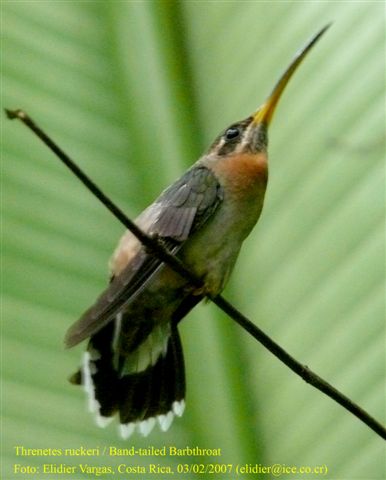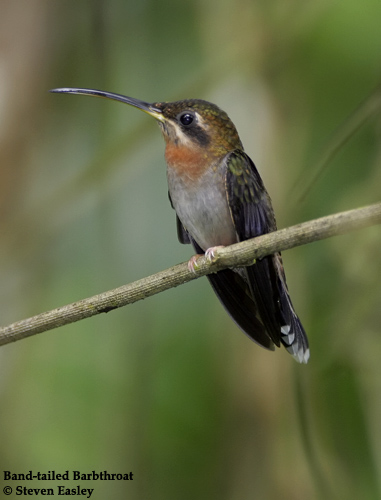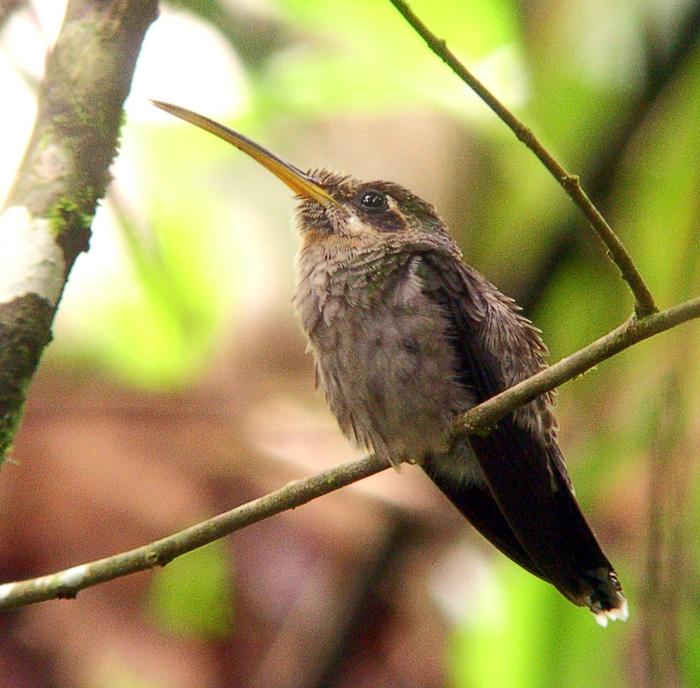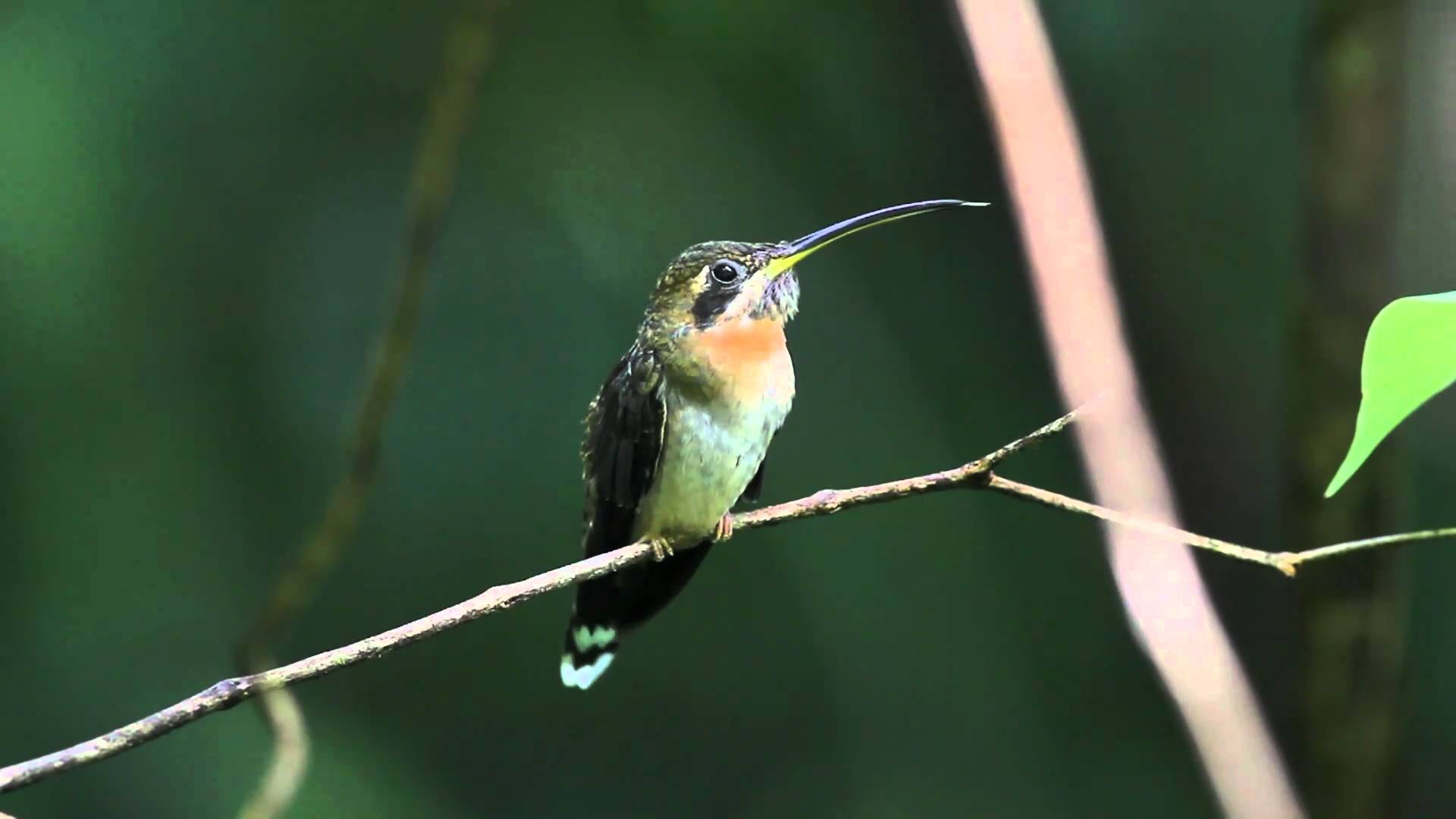
Threnetes ruckeri
SUBFAMILY
Phaethornithinae
TAXONOMY
Trochilus ruckeri Bourcier, 1847, Esmeraldas, Ecuador. Three
subspecies currently recognized.
OTHER COMMON NAMES
English: Rucker’s hermit; French: Ermite de Rucker; German:
Weissbinden-Schattenkolibri; Spanish: Ermitгo Barbudo
Colibandeado.
PHYSICAL CHARACTERISTICS
4–4.3 in (10–11 cm); female 0.18–0.25 oz (5–7 g), male
0.19–0.25 oz (5.5–7 g). Medium-sized hummingbird with contrasting
underpart coloration, almost straight bill, dark rectrices
with white tips. Prominent white base to outer tail feathers,
creating a subterminal black band. Immatures have ochraceous
feather fringes on upperparts and light tips to remiges, otherwise
similar to adults.
DISTRIBUTION
T. r. ventosus: eastern Guatemala and Belize to Panama; T. r.
ruckeri: northern and western Colombia, Ecuador; T. r.
venezuelensis: northwestern Venezuela.
HABITAT
Understory of primary and disturbed forest, secondary growth,
forest edge, plantations, and riverine vegetation from sea-level
to 4,000 ft (1,200 m).
BEHAVIOR
Traplining-species. Soft flight call. Song, a series of whistles,
can be heard from perching males throughout the day.
FEEDING ECOLOGY AND DIET
Nectar of Heliconia, Costus, and other tubular flowers; also
small arthropods, especially spiders taken from webs or underneath
leaves. Nectar robbery recorded by piercing corolla base
of tubular flowers too long for its bill.
REPRODUCTIVE BIOLOGY
Males establish leks during reproduction. Breeds on the
Caribbean slope of Costa Rica from February to May, on the
Pacific slope from June to September; two nesting seasons in
Colombia (January to April and in September). Nest is a
loosely built cup of rootlets, plant fibers, vegetable hairs and
spider web, similar, but more compact than that of Glaucis, and
fixed to the underside tip of a long, pendent leaf. Two eggs; incubation
15–18 days by female. Fledging 23–25 days. Young
remain with female for three to four weeks. Male observed in
the vicinity of an incubating female.
CONSERVATION STATUS
Common throughout its range.
SIGNIFICANCE TO HUMANS
None known.
Other popular Animals
Photo Gallery of - Band-tailed barbthroat




 Animalia Life
Animalia Life